COVID-19 has impacted not just how and where you find leads, but what your customers and prospects expect from your business. As companies look for new ways to improve efficiencies and cut costs, many organizations have had to adjust their offerings to keep up. While this means a shift in positioning for you, it can also be a great opportunity to get to know your customers and buyers better and adapt your sales approach to meet new needs in the market.
At the peak of the crisis, many of our current and future customers saw their sales pipelines dry up in just days, and we knew that even for a complex sale, end-to-end lead development was too lengthy of a process to meet their immediate needs. They needed to execute a new sales strategy quickly, so we created bite-sized service offerings that filled the gaps and helped them gain traction. As a result, we began attracting companies that had previously not met our ideal client profile, and we were able to offer our services to a wider range of companies with varying needs.
Whether the effects of COVID-19 spurred you to build a new product or service for your current customers, or you’ve identified a new group that could benefit, how do you pivot your approach so you can expand your complex sale into new markets?
The best way to understand a new market is to get to know your current customers first. This is not only critical for retention but can open your eyes to new challenges that have developed for them in recent months. They can also reveal strengths and weaknesses in your sales process that can help you make a greater impact when you explore a new audience.
Ask your customers if they would be willing to participate in a brief interview or survey. These Client Quality Assessments (CQA) give them the chance to speak their mind, and their valuable intel can help you better position yourself, create more engaging marketing content, and address the pain points of your future customers. In order to truly let the customer speak their mind and give you the best feedback, we suggest having the interview conducted by someone who does not have a direct impact on what they may say.
This interview-style outreach also works well with prospects who you’ve established some relationship with but are not a current customer. For example, we worked with a leading innovator in medical alert services who wanted to bring back healthcare prospects who had gone dormant. Our goal was not to immediately book appointments, but to reengage them and collect information that would help our client improve their overall process and drive new stakeholders towards their product.
After 148 interviews, we had a better understanding of their full market potential, referral method preferences, obstacles and opportunities. As a result, we added 500+ new referrers to the program which led to 1,200+ new product fulfillments within two years.
Another great way to understand how the needs of your market have changed is to follow the data per industry and define the scope of your total addressable market. Then, initial outreach can be used to test decision-makers and see where you gain traction so you can make critical pivots before going too far down the funnel with booked appointments. For one client, we tested two different messages and then shifted to the one that resonated most with buyers. For another, we started targeting C-suite titles and then realized director-level had a better impact.
Especially during this unusual time, you may find that the primary decision maker a few months ago no longer has the buying power, or perhaps there are other stakeholders who now have extra budgets they can put towards your offering. When dealing with a complex sale, it’s important to conduct market research outreach before trying to book a meeting, so you can warm up the audience and gather information to drive you towards the right people and the best opportunities.
Test a new market before committing to it fully by using a Strategic Outbound approach to ensure that these new decision makers are qualified and then gradually nurture them and build trust in your brand. As you track engagement, you can compare the performance of this new group to your other markets and adapt your positioning as you learn more about them. Even if you find that it’s not a great fit, you’ll learn more about your own business and get closer to finding your ideal client.
The first EHR-embedded chatbot for patient communications responded quickly to the pandemic in March 2020 by creating COVID-specific workflows so that mid-to-large health systems could reduce staff exposure, convert appointments to televisit, and broadcast important communications.
This pivot in their offering required a quick shift in messaging and audience development. The MarketLauncher team established a lead funnel 78% larger than originally forecasted and started focusing on C-level and Operations titles who were more likely to make the decisions around COVID response.
While contacts were hard to reach at first because of the added strain put on hospital systems, those who were open to a conversation were highly engaged and 37% were booked for an exploratory call.
Two months later, messaging shifted again to focus on bringing patients back into the office, and we focused on Director- and VP-level titles who were tackling this challenge specifically. We found that the largest number of appointments were booked with Patient Access titles, which gave our client a predictable model on which to conduct future outreach. Ultimately, 77% of the decision makers who met with their team proceeded to the next stage of the sales process, and 52 new potential targets were added to their future pipeline.
Read more Healthcare Client Stories
As you expand your roster of customers and pivot your positioning to reach into new markets, it can be a great time to consider how a Strategic Outbound approach can keep your pipeline active, no matter what unforeseen events may occur. The current crisis may have reshaped your business and even your industry, but your ability to adapt and thrive depends on your determination to capture new opportunities quickly and stay closely connected to the needs of your customers.




